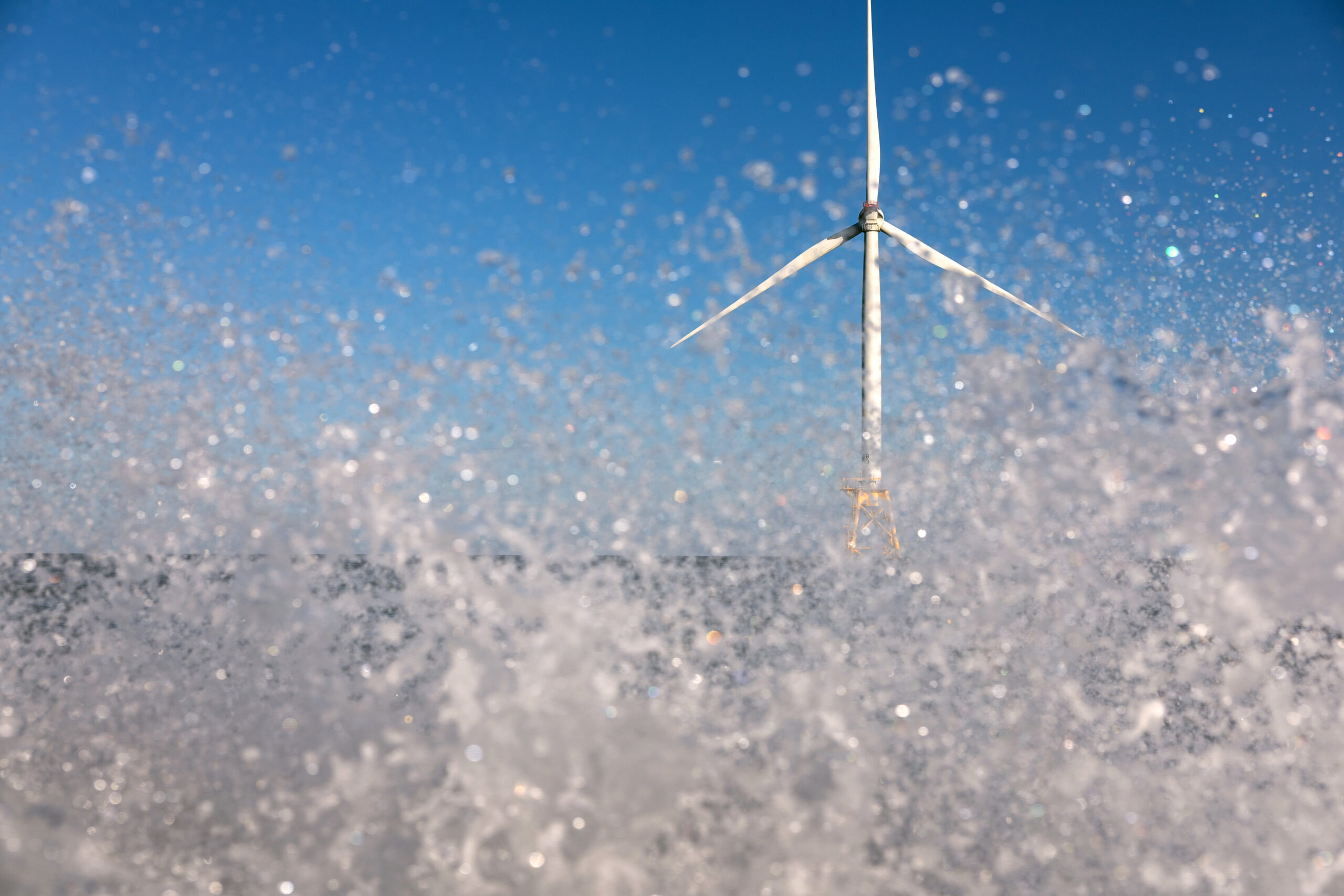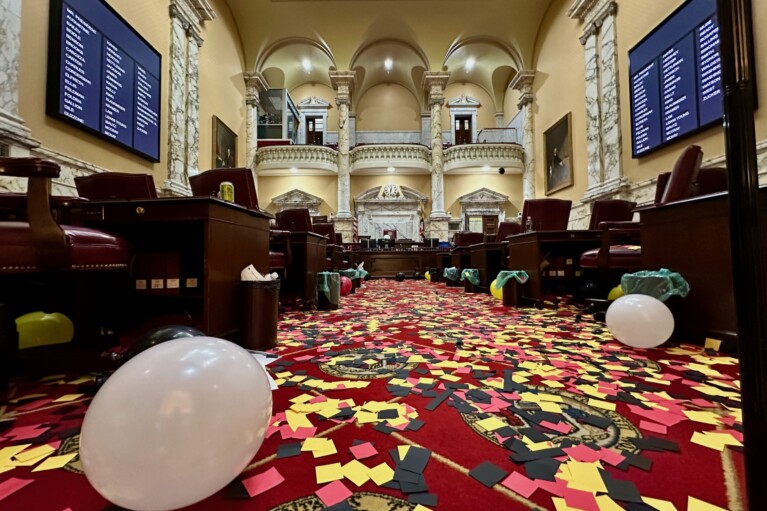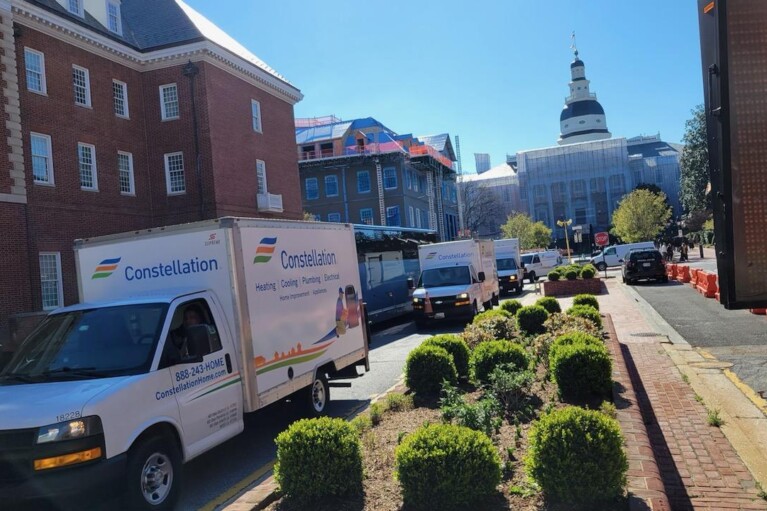House leaders prepping legislation to boost Maryland offshore wind

Stung by news that one of the two companies that was planning to install wind energy turbines off the coast of Ocean City is reassessing its projects, House leaders are drafting legislation designed to shore up the state’s offshore wind industry.
House Economic Matters Chair C.T. Wilson (D-Charles) and Vice Chair Brian M. Crosby (D-St. Mary’s) will introduce a bill later this week to buttress USWind, the one company fully committed to building wind installations in federal waters near Maryland, and encourage more players to enter the marketplace.
“If you want to be a good partner and move in the direction that Maryland wants to move in, we want to help,” Wilson said in an interview Tuesday.
The state has ambitious goals to generate 8.5 gigawatts of electricity, enough to power almost 3 million homes, from offshore wind sources by 2031. But late last month, Ørsted, one of two companies that had won leases to build wind farms off the coast, announced it was “repositioning” its plans, pulling out of its agreement with the state and seeking alternative financing.
Although Ørsted is the biggest developer of offshore wind in the world, and was an early entrant into the still developing U.S. market, some of its American projects have struggled of late, due in part to inflation and worldwide supply chain issues for the industry. Last fall, the company abandoned two proposed developments off the New Jersey coast altogether.
That was a warning signal to Wilson, whose committee moved complicated legislation last year to expand the offshore wind industry in Maryland.
“We saw the writing on the wall when Ørsted pulled out of the New Jersey projects,” he said.
After that announcement, Wilson and Crosby convened meetings with representatives of both Ørsted and USWind, which confirmed their impression that USWind was more committed to building in Maryland and farther along in project planning and construction. Although both companies have invested millions of dollars in the state for facilities that would support the construction, assembly and maintenance of the giant wind turbines, USWind has already received some key federal permits for its projects and reached an agreement to land its transmission lines from the wind installations in Delaware, where they would connect with the regional electric grid.
“Let me be clear: US Wind is here to stay,” Jeff Grybowski, USWind CEO, said late last month. “I am very confident that we will build Maryland’s first offshore wind farm and deliver this clean energy to the people of Delmarva for years to come.”
Wilson and Crosby said they decided to craft their legislation accordingly.
Both the Ørsted and USWind projects have been sustained in part by financial clean energy credits from the state known as ORECs, which the Maryland Public Service Commission (PSC) awarded in 2017. Among other things, Ørsted with its announcement last month pulled out of its agreement with the state for ORECs for two phases of its Maryland project, saying it needed a bigger source of funding.
“I think to an extent they wanted to call our bluff” with the announcement, Crosby observed.
Wilson and Crosby said their legislation would provide more favorable ORECs to USWind and also envisions directing the PSC, the state’s chief utility regulator, to open more lease space to other potential bidders. The legislation also would set parameters for letting USWind erect more turbines than currently allowed with greater generation capacity, and would keep rate caps for electricity consumers who are charged a monthly fee to help support the industry.
The lawmakers believe it’s possible for USWind to take over anywhere between a third and a half of Ørsted’s existing lease allocation.
“We’re working with our partner,” Wilson said. “They [Ørsted] have chosen not to be our partner.”
Grybowski said USWind believes it can expand its projected presence in the waters off Ocean City, with proper incentives and tweaks to current guidelines.
“We are ready to step into the breach and step up our plans to ensure that Maryland’s offshore wind goals remain on track,” he said. “As we work towards securing final federal permits later this year and getting closer to the day we get steel in the water, we are grateful for the strong partnership we have with the Moore administration and Maryland’s legislative leadership.”
But Maddy Voytek, Ørsted’s head of government affairs and market strategy in Maryland, said that despite what some policymakers may think, the company is not prepared to abandon its Skipjack Wind projects in the state, and said the circumstances here are significantly different than they were in New Jersey.
“We remain engaged with state leaders on identifying a value-creating path forward for Skipjack Wind to help the state achieve its clean energy goals,” she said. “Governor Moore and the General Assembly have been steadfast partners to date, and our belief in Maryland as a leading offshore wind region remains as strong as ever.”
Voytek said the company is “advancing Skipjack Wind’s development” and plans to submit a construction and operations plan, similar to what has already been approved for USWind, to the U.S. Bureau of Ocean Energy Management.
“Submission of the [plan] will be a critical milestone in Skipjack Wind’s development, bringing the project one step closer to federal permitting review,” she said. “We have high confidence in Skipjack Wind’s ability to deliver value for both people and nature and are actively monitoring future offshore wind procurement opportunities in the market.”
Ørsted representatives are expected to meet with House leaders later this week, and it’s entirely likely that their politically plugged-in team of lobbyists, lead by the Annapolis firm Rifkin Weiner Livingston LLC, will try to influence the process over the Wilson-Crosby bill. (USWind uses the equally influential firm Perry White Ross & Jacobson).
While similar legislation isn’t expected to be introduced in the Senate this legislative session, Sen. Brian J. Feldman (D-Montgomery), chair of the Committee on Education, Energy and the Environment, told Maryland Matters he is looking forward to reading the House measure and is generally supportive of the concept.
Both Ørsted and USWind have been awarded leases off of Maryland in two phases, and the Public Service Commission is expected to award a third set of leases to offshore wind developers sometime in the future. Either company could, in theory, bid for those — as could other players in the industry.
The POWER Act, which the legislature approved last year to expand the state’s offshore wind goals, empowers the PSC to conduct an analysis of offshore wind transmission system expansion options. It also directs the Maryland Department of General Services, which manages state government properties, to invite bids for a transmission project — which could ease the offshore wind operators’ financial burden and expand wind energy generation and transmission in the state.
Wilson said passing the soon-to-be-introduced bill is essential to keep Maryland on target to reach its clean energy and carbon emissions reduction goals.
“People recognize how important it is to get off our reliance on fossil fuels,” he said.




 Creative Commons Attribution
Creative Commons Attribution